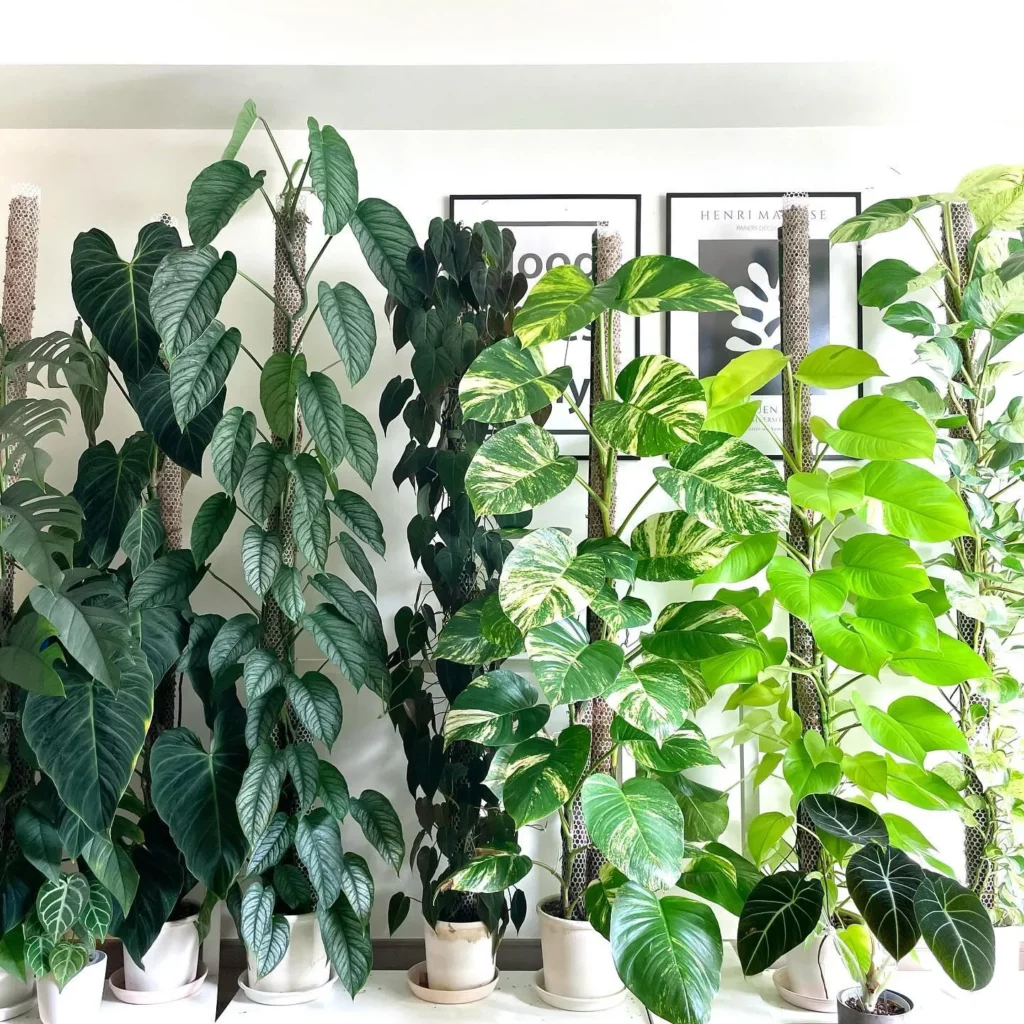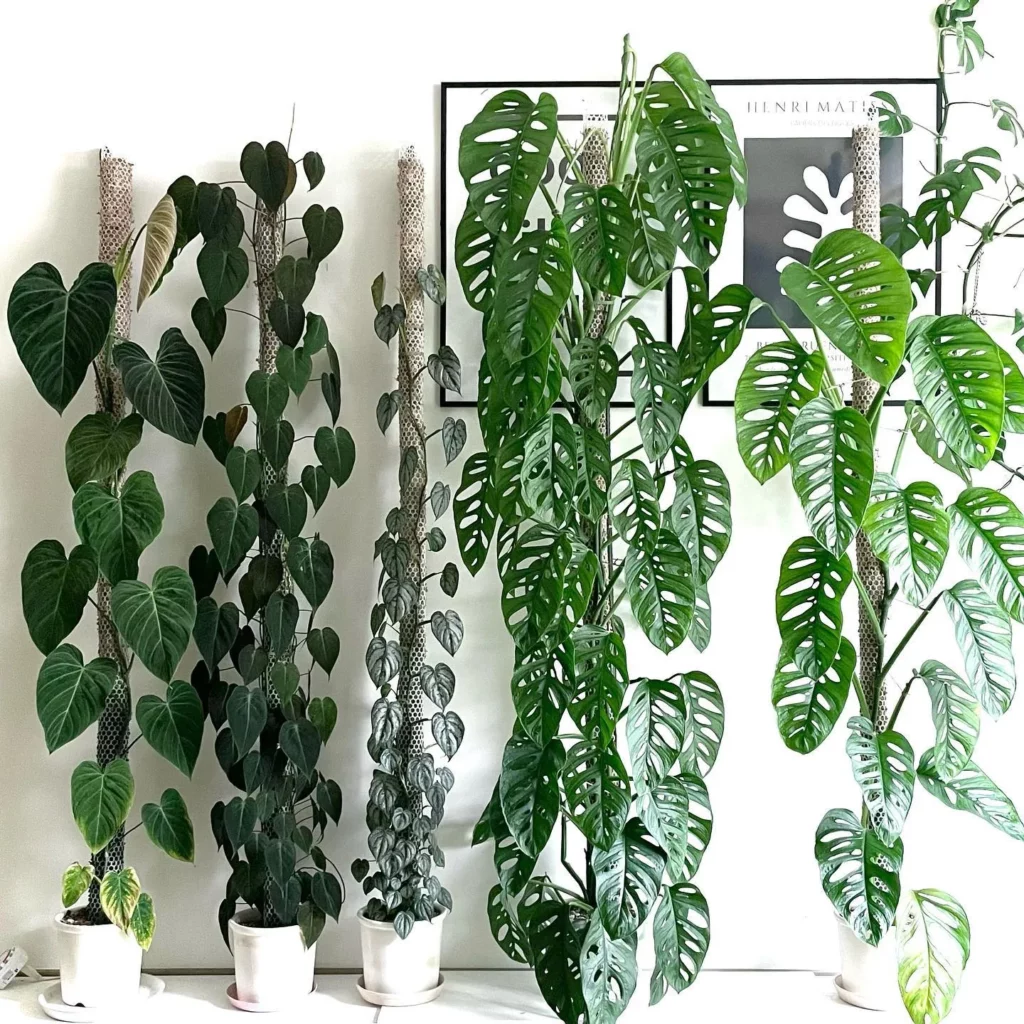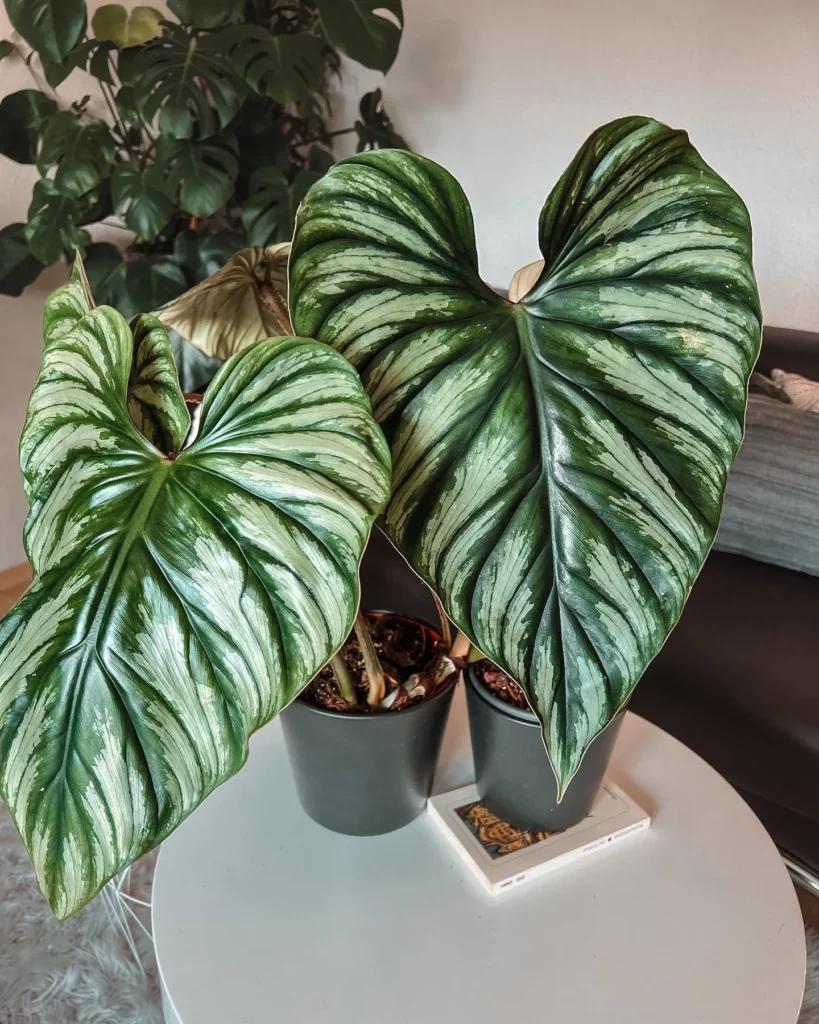Your philodendron may be dying due to improper care, such as incorrect watering, inadequate light, pest infestations, or unsuitable soil conditions.
Philodendrons, popular for their lush green foliage, require specific care to thrive in indoor environments. Their decline or death can be attributed to various issues, including improper watering, pests, and diseases.
Caring for these plants, contrary to the notion of them being “foolproof,” demands an understanding of their unique needs for light, water, soil, and nutrients, which can vary even within the same species due to age or environmental factors.
Successfully nurturing a philodendron requires knowledge, dedication, and sometimes trial-and-error, but this effort can lead to the plant’s long-term health and aesthetic appeal.
Signs Of A Dying Philodendron: When All Is Not Well



You’ve been admiring your philodendron every day since you brought it home from the nursery- but now something seems off. Perhaps the leaves are yellowing or browning at the edges; maybe they’re drooping or wilting; maybe new growth is stunted or nonexistent.
Whatever symptoms your plant exhibits- don’t ignore them! As with most health issues (plant or otherwise), early intervention is key.
So how can you tell if your philodendron is in distress? Here are some common signs to look out for:
No products found.
Yellowing leaves: This could be a sign of overwatering, underwatering, or nutrient deficiencies. – Browning edges: Usually a sign of underwatering, but can also indicate low humidity or nutrient problems.
Wilting or drooping: Could be caused by overwatering, underwatering, poor light conditions, or soil issues. – Stunted growth or lack of new growth: May indicate nutrient deficiencies, insufficient light, or root problems.
Watering Issues: The Perils Of Too Little…and Too Much

Water is essential to all plant life – but it’s also one of the most common causes of plant death. For philodendrons specifically, there are two main watering issues that can arise: Underwatering: Philodendrons like to be kept moist (but not waterlogged) at all times.
If the soil dries out completely for an extended period – which can happen if you forget to water it regularly – the roots may begin to die off and leave the plant struggling. Overwatering: On the other hand, too much water can be just as harmful as too little.
No products found.
When soil stays consistently wet (as might happen with daily watering or poor drainage), it becomes prone to root rot – a fungal disease that can quickly kill off your philodendron. Additionally over-saturated soil may lead to drowning your plant’s root system causing sudden death.
So how do you find that sweet spot between too much and not enough water? Start by learning your plant’s specific needs- they may differ depending on the size of the plant or environment it’s in.
A general rule of thumb for philodendrons is to water when the top inch of soil feels dry to the touch. Make sure to use well-draining soil and a pot with drainage holes, and avoid letting your plant sit in standing water.
Remember, watering is not a one-size-fits-all equation. Keep an eye on your philodendron and adjust as needed based on its response.
Light Requirements: Shedding Light On Philodendron Needs



When it comes to light, philodendrons are considered “low-to-medium” light plants – but that doesn’t mean they can thrive in any old corner of your home. In fact, getting the right amount (and type) of light can be one of the trickiest aspects of philodendron care. First, let’s talk about what “bright but indirect” light means.
This is often listed as a requirement for philodendrons, but it can be confusing if you’re not familiar with indoor lighting terminology. Essentially, bright but indirect light means bright enough that you could comfortably read a book in that spot during daylight hours – but not so much that direct sunlight hits the plant at any point during the day.
No products found.
So where should you place your philodendron? Ideally, somewhere where it will receive dappled or filtered sunlight throughout most of the day- such as near an east-facing window – or under artificial lighting systems intended for growing houseplants if natural lighting is unavailable.
If you don’t have access to much natural light (or if you simply want to give your philodendron an extra boost), consider using grow lights designed specifically for indoor plants. These simulate natural sunlight and can help ensure that your plant gets all the energy it needs to grow strong and healthy.
Soil Problems: Digging Deep Into The Issue
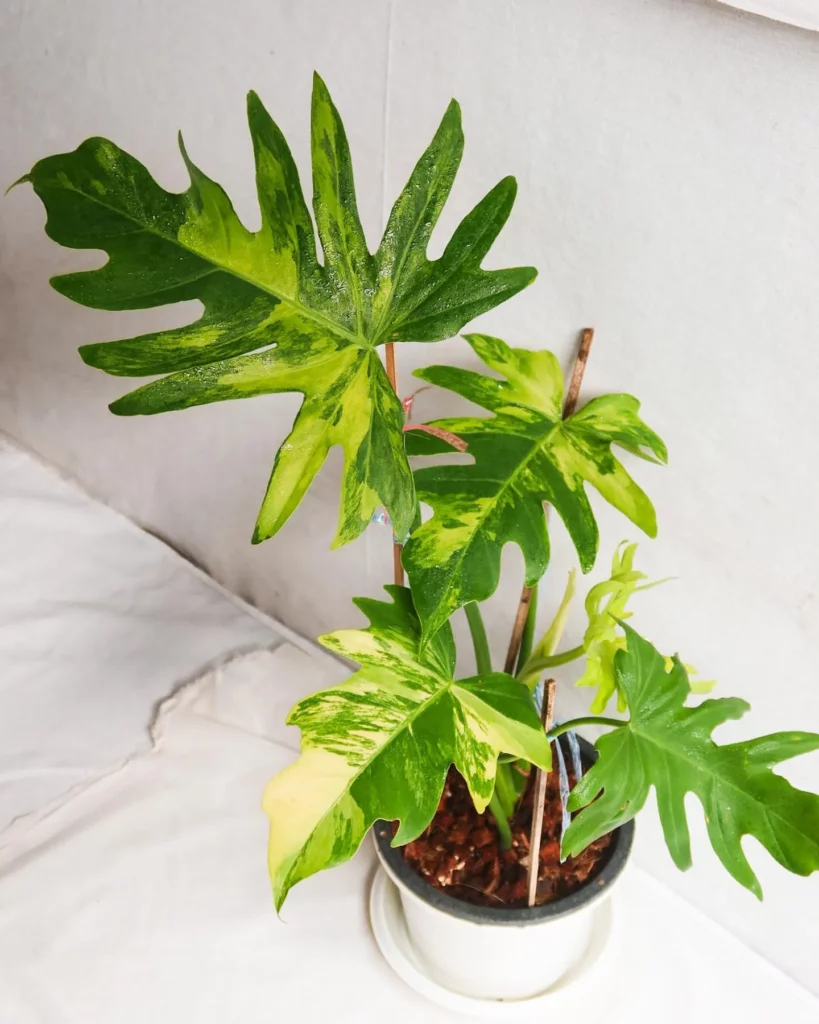
Soil may not be the most glamorous aspect of plant care, but it is crucial. Poor soil quality can lead to a host of issues for your philodendron, including root rot or suffocation from compacted soil. When choosing soil to use for your philodendron, aim for a lightweight and well-draining mix that retains moisture but doesn’t stay waterlogged.
You may be tempted to use garden soil or regular potting mix, but these can often be too heavy and dense for indoor plants. Consider adding perlite or vermiculite to increase drainage and airflow in your potting mix or purchase ready-made mixes designed specifically for philodendrons.
No products found.
Make sure that the pot you’re using has drainage holes so that excess water can escape (these will also help prevent root rot). And finally, if you notice any yellowing leaves or stunted growth in your philodendron despite appropriate watering and light conditions – try re-potting with fresh soil as it may need its roots to have more breathing room.
Pests And Diseases: The Enemies Within


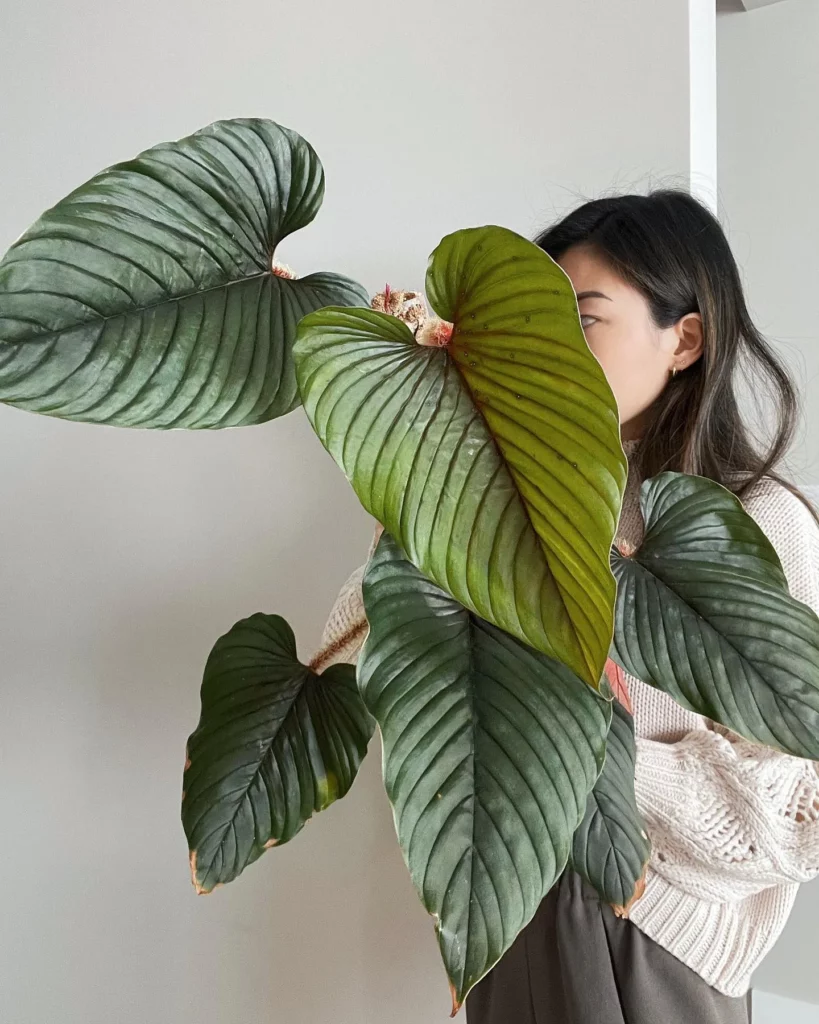
Even with proper care, sometimes pests and diseases can strike- leading quickly down a path towards death. Common pests that affect philodendrons include:
Spider mites – Mealybugs
Scale insects Pests will typically present themselves via tiny webs under leaves (spider mites), white cotton-like clusters on leaves (mealybugs), hardened bumps on stems or the underside of leafs (scale insects).
Diseases like leaf spot or root rot are usually related to overwatering.It’s important to catch pest problems early – otherwise they can quickly reproduce and spread throughout your plant collection. Insecticidal soap sprays containing neem oil can work effectively at controlling infestations, but prevention is always the best strategy – avoid over-watering and keep your plant’s environment clean and dry.
No products found.
If you suspect a disease issue (such as root rot), remove your philodendron from its pot and inspect its roots for any sign of dark or mushy areas. Cut away any affected roots with sharp, clean scissors (sanitize with rubbing alcohol between cuts) and re-pot in fresh soil.
Signs Of A Dying Philodendron

The Obvious Warning Signs
Philodendrons are known for their resilience and adaptability, but even the most robust plant can suffer if not given the proper care. The first signs that something is wrong usually manifest themselves with discoloration of the leaves.
Yellowing leaves are an obvious warning sign that something is off balance, and while it’s easy to see, it may not point to the exact cause of your philodendron’s struggles. Wilting or stunted growth are other common indicators that your philodendron is in trouble.
Uncommon Symptoms
However, sometimes even these obvious symptoms may not be enough for you to diagnose what’s going on with your plant. For example, perhaps you’ve noticed that one side of your philodendron is growing more slowly than the other side.
Or maybe some leaves have brown spots on them but others don’t. These more subtle signs could indicate any number of issues and can be difficult to isolate without a bit of investigation.
The Difficulty In Diagnosing Your Philodendron’s Problems
The challenge in diagnosing issues with a dying philodendron lies in the fact that there are many possible causes for those symptoms mentioned above. Each potential cause requires its own unique solution, so it’s essential to pinpoint what’s causing your plant distress before taking action.
Sometimes the cause is obvious: you’ve been watering too much or too little or keeping the plant in direct sunlight for too long. Other times, it’s less clear cut: perhaps there’s an issue with soil quality or nutrients aren’t reaching where they need to go within the potting mix.
A Reminder: Keep A Close Eye On Your Plant
Regardless of whether symptoms are apparent from afar or require a closer inspection, the key is to keep a close eye on your philodendron. When you’re watering your plants, take the time to look over them thoroughly. Inspect both the leaves and the soil regularly for any signs of distress.
If you notice something out of place, don’t hesitate to do some research or consult with a local horticulturist to figure out what’s going on and how to address it. In doing so, you’ll be able to keep your houseplants thriving for years – or even decades – to come.
The Watering Conundrum: Overwatering & Underwatering



Water, Water Everywhere, But Not a Drop to Spare?
Let’s be real here: watering plants is tricky business. You don’t want to drown them in water, but at the same time, you don’t want them to suffer from thirst either.
Philodendrons are no exception – they need just the right amount of water to thrive and survive. And yet, many plant owners struggle with the watering aspect of caring for their philodendrons.
One of the most common mistakes people make is overwatering their philodendron. It’s understandable – you see a wilted plant and your instinct is to give it some water ASAP.
However, too much water can lead to root rot and other issues that can ultimately kill your plant. On the other hand, underwatering can also be detrimental to your philodendron’s health.
The Fine Line Between Too Much & Too Little
So how do you strike the right balance? First things first – make sure you’re using a well-draining soil mix that allows excess water to flow out easily. This means avoiding soils that are too compact or heavy with clay.
You should also choose a pot with drainage holes so that water doesn’t sit stagnant in the bottom of the pot. Next up is figuring out how often and how much to water your philodendron.
The general rule of thumb is to let the top inch or so of soil dry out before watering again, but this can vary depending on factors such as humidity levels and temperature. As for how much water to give your plant?
It depends on its size and individual needs. A small philodendron may only need a few ounces of water every week while a larger one may require several cups.
Trial & Error
If all of this sounds confusing – don’t worry, you’re not alone. The truth is, finding the right watering balance for your philodendron may take some trial and error. It’s important to pay close attention to your plant and adjust your watering schedule as needed.
One thing to keep in mind is that philodendrons are relatively resilient plants, so if you do accidentally overwater or underwater it once or twice, it’s not the end of the world. Just make adjustments going forward and your plant should bounce back.
Light Requirements: Bright But Indirect

If you’re wondering why your philodendron is dying, one factor you might not have considered is lighting. Philodendrons need bright but indirect light to thrive.
What does that mean, exactly? It means they need a lot of light, but it shouldn’t be direct sunlight.
Let’s start with the “bright” part of the equation. Philodendrons are tropical plants that evolved in light-filled rainforests.
In order to replicate this environment in your home, you need to provide them with plenty of light. This can be a challenge if you don’t have a particularly sunny window or live in a climate that doesn’t get much natural sunlight.
No products found.
But just because philodendrons need a lot of light doesn’t mean they should be exposed to direct sun. Direct sunlight can scorch their leaves and cause irreparable damage.
To avoid this, place your philodendron near a sunny window where it can get plenty of bright but indirect light. One common mistake people make is assuming that any old sunny spot will do for their philodendron.
But there’s more to it than simply exposing your plant to an hour or two of sunshine each day. If the light is too direct or intense, it can actually harm your plant rather than help it.
Another thing to keep in mind is that different species of philodendron may have slightly different lighting needs. Make sure you research the specific type of philodendron you own so you can give it the right amount and type of lighting for optimal health.
Soil Problems
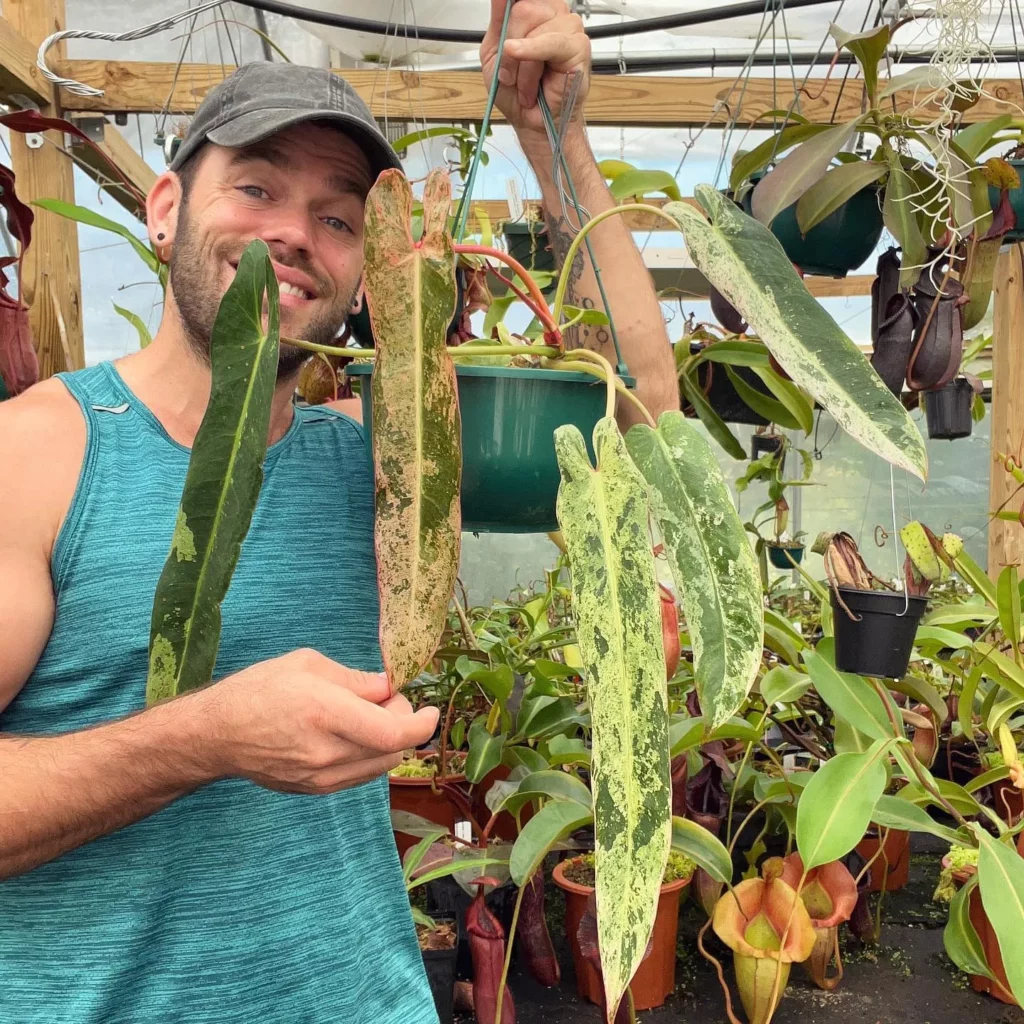
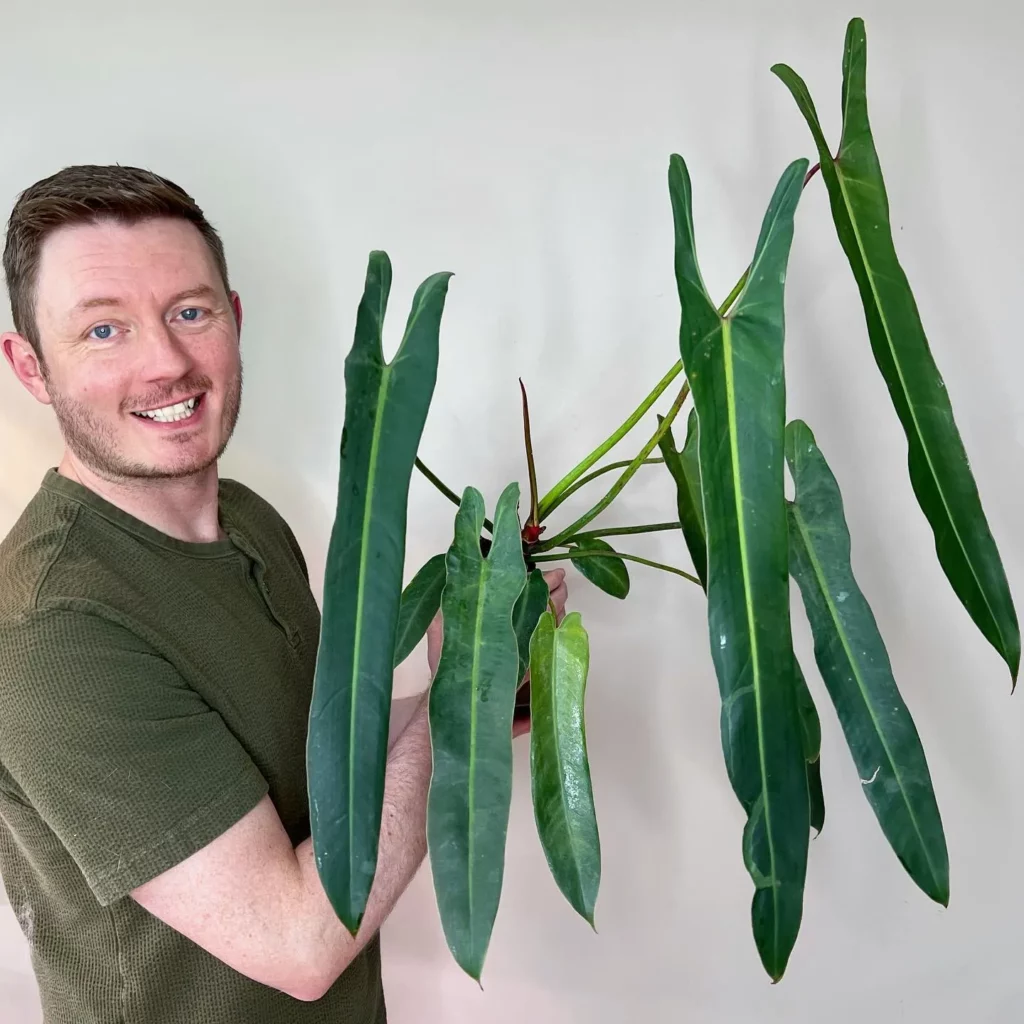

The Root Of The Problem
Soils may look like mere dirt to the untrained eye, but they are the basis of life for any plant. Philodendrons are no exception, and their roots need healthy soil to provide them with nutrients and moisture.
Poor soil quality or improper drainage can be a significant contributing factor to a philodendron’s decline, and unfortunately, soil issues may not be obvious until it’s too late. The first issue is poor-quality soil.
Most philodendrons thrive in well-draining soil with good aeration for their roots. However, the wrong mixture can cause problems such as excess water retention or poor nutrient availability.
Using garden soil or plain dirt from your backyard as potting mix is a big no-no since it does not have the proper texture and drainage requirements that your philodendron may need. The second issue is improper drainage.
It’s essential to ensure that there are enough holes at the bottom of your pot so that water can drain out quickly enough before it drowns your plant’s roots. Additionally, if your pot does not have adequate drainage capacity because of its size or material (e.g., ceramic pots), you risk trapping water in with your philodendron causing root rot.
Hidden Pitfalls
Another common issue with soils is that sometimes there could be hidden pitfalls that end up harming your philodendron without you even realizing it. One such problem is an infestation of pests like fungus gnats who lay eggs within damp soils which hatch into larvae feeding on organic matter in soils including roots leading to damage. Moreover, while sometimes visible pests like spider mites can make their homes on leaves and branches; other times, they hide within soils unnoticed making them harder to catch early on before significant damage has been done.
In addition to pest infestation, unnoticed soil-related issues can lead to a weakened plant that has no resistance to disease. For example, if your philodendron is in poor-quality soil and you use fertilizer, it could absorb too much nitrogen leading to its leaves turning yellow and falling off.
Pests And Diseases: The Silent Killers Of Philodendrons

The Unseen Menace
Philodendrons are known for their resilience, but even the toughest plants can fall victim to pests and diseases. These issues can be difficult to spot, as they often manifest themselves subtly. By the time you realize something is wrong, it may be too late to save your precious plant.
One of the most common pests that philodendrons face is spider mites. These tiny insects are difficult to see without a magnifying glass and can quickly spread from plant to plant.
They thrive in warm, dry conditions and can cause serious damage if left unchecked. Symptoms of a spider mite infestation include yellowing leaves, brown spots on the leaves, and small webs on the plant.
Another pesky pest that philodendrons may fall victim to is mealybugs. Similar to spider mites, these insects thrive in warm temperatures and can quickly spread throughout your collection if not dealt with promptly.
Mealybugs look like small white cotton balls or bits of fluff and tend to congregate in clusters along the stems of your plants or under leaves. In addition to pests, philodendrons are also susceptible to a variety of diseases that can significantly impact their health.
One common problem is root rot caused by overwatering or poor drainage. This fungal disease attacks the roots of your plant and can lead to wilting or yellowing foliage as well as stunted growth or death.
The Importance Of Identifying & Treating Pests & Diseases Early
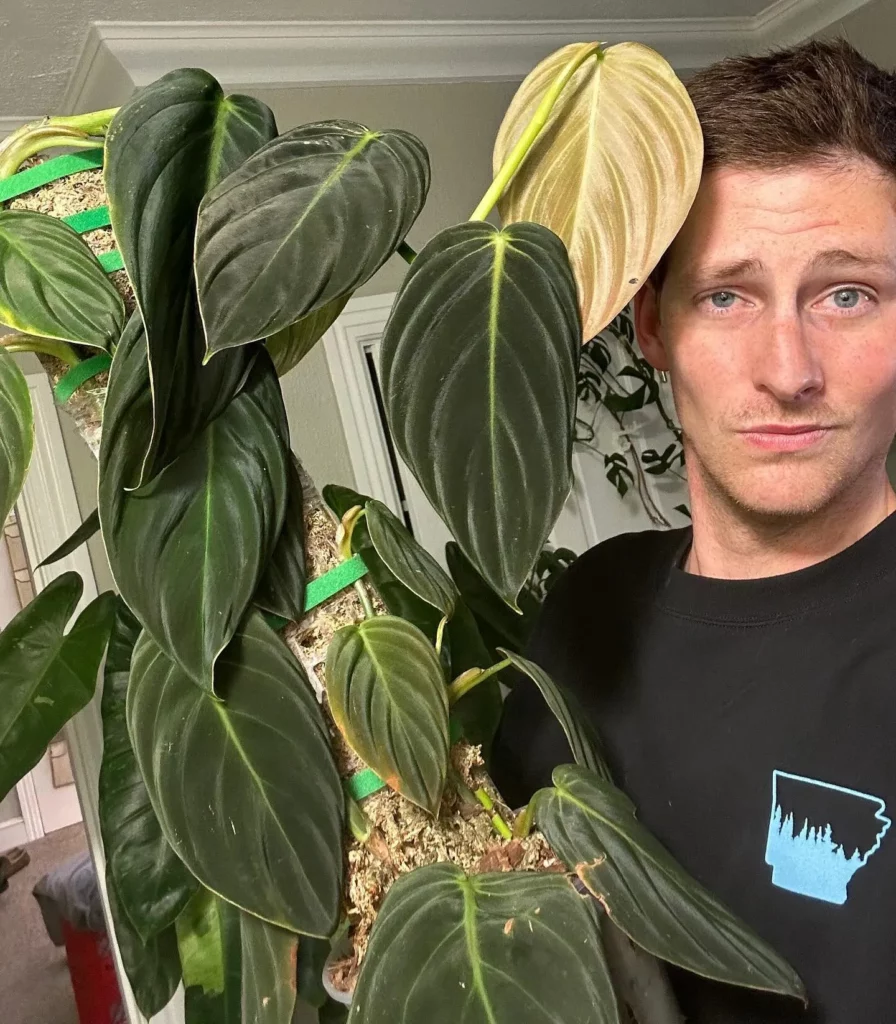
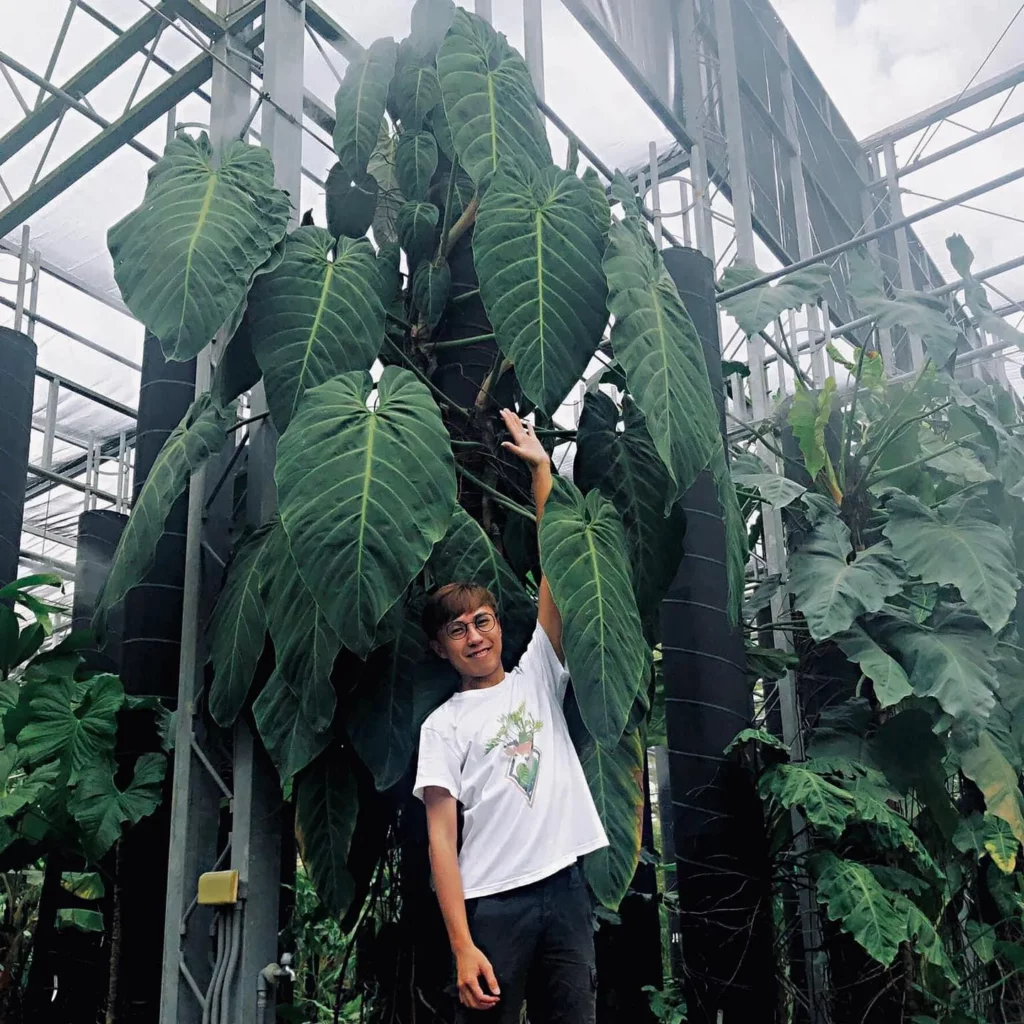

Don’t Be Too Late
If you suspect that your philodendron is suffering from pests or disease, it’s essential to take action as soon as possible. The longer you wait, the more challenging it will be to bring your plant back to health and prevent it from spreading to other plants in your collection. One effective treatment for spider mites is to wash down your plant with a gentle soap and water solution.
This will help remove any insects and their eggs that may be lurking on the leaves. You can also use insecticidal soap or neem oil spray if the infestation is more severe.
If you notice signs of root rot, such as yellowing leaves or wilting foliage, remove your plant from its pot immediately. Carefully inspect the roots for any signs of decay and trim away any unhealthy portions before repotting in fresh soil.
While it’s possible to treat many pests and diseases on your own, some issues may require more specialized knowledge or expertise. If you’re unsure about how to address a problem with your philodendron, consider consulting with a professional gardener or horticulturist who can help diagnose the issue and recommend effective treatment options.
Frequently Asked Questions
An overwatered philodendron may display several signs. These include yellowing or wilting leaves, root rot, mushy or discolored roots, a foul odor emanating from the soil, and the presence of fungus gnats or other pests. The soil may also remain excessively wet or soggy for extended periods.
If your philodendron is dying, there are a few steps you can take to try and revive it. First, assess the watering practices and adjust accordingly. Ensure that you are not overwatering the plant and allow the soil to dry out between waterings. Trim any yellow or dead leaves to redirect energy to healthier parts of the plant. Check for pests and treat them if necessary. Finally, provide adequate light, humidity, and appropriate temperatures for your philodendron’s specific needs.
There could be several reasons why a philodendron is not thriving. Common factors include inadequate light levels (either too much or too little), incorrect watering practices (overwatering or underwatering), poor soil conditions, lack of nutrients, improper temperature or humidity levels, or the presence of pests or diseases. Assess each of these factors to identify and address any potential issues.
To fix an overwatered philodendron, start by stopping any further watering and allow the soil to dry out. Remove the plant from its pot and inspect the roots. Trim away any mushy or rotting roots, ensuring to use clean and sharp tools. Repot the philodendron into fresh, well-draining soil, and provide it with proper light and air circulation. Adjust the watering schedule to ensure the soil is allowed to dry partially between waterings. Monitor the plant closely for signs of recovery and adjust care as needed.
After reading this, check out our other articles on:
Conclusion
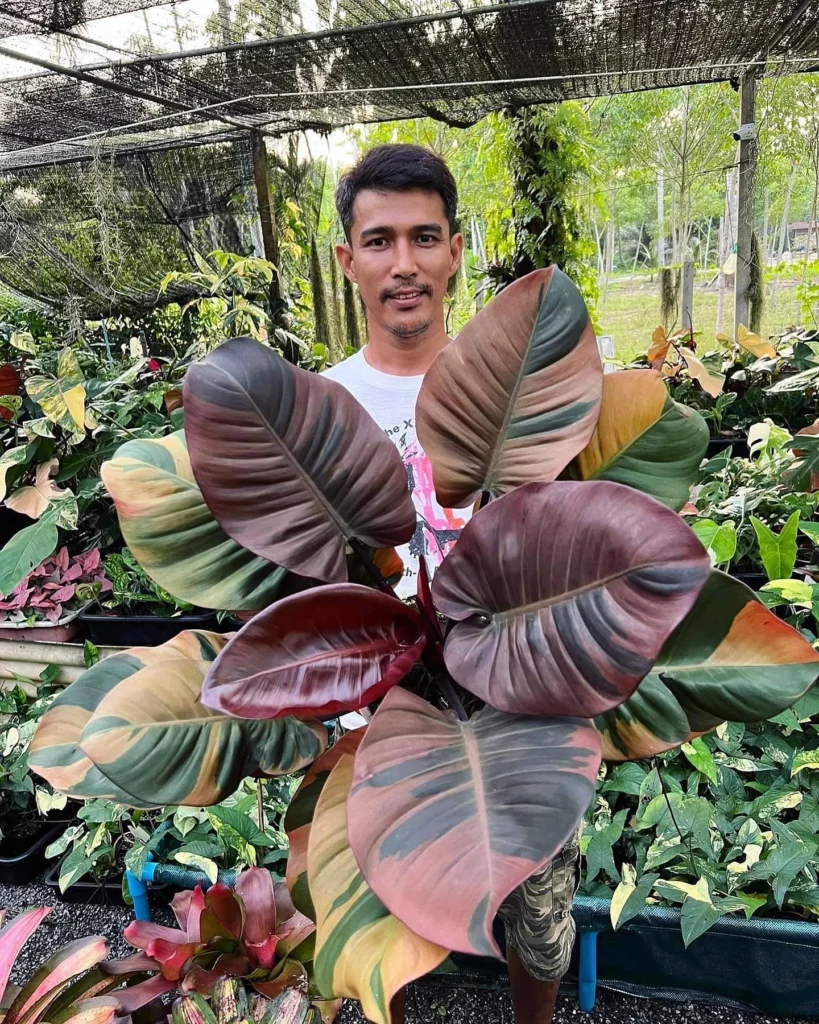
After considering all of the potential factors that could be contributing to your philodendron’s decline, it is clear that there is no one-size-fits-all solution to this problem. However, by paying close attention to your plant and taking steps to address any issues you notice, you can greatly increase the chances of nursing it back to health. In order to keep your philodendron healthy, it is important to monitor its watering schedule closely.
While it can be tempting to water your plant frequently in an effort to keep it looking lush and green, overwatering can be just as harmful as underwatering. Instead of relying on a rigid watering schedule, take the time to observe your plant and adjust its care according to its individual needs.
Additionally, providing adequate levels of light is crucial for a philodendron’s growth and survival. While these plants thrive in bright but indirect light, they can easily suffer if they are placed in too much direct sunlight or too little light altogether.
To ensure that your philodendron is getting the right amount of light, consider moving it around periodically until you find a spot where it seems happiest. Soil quality and pest control are also important considerations when caring for a philodendron.
By choosing high-quality soil with good drainage and keeping an eye out for pests like spider mites or mealybugs, you can help ward off potential problems before they become serious threats. Ultimately, caring for a philodendron requires patience and attention.
While these plants may seem easy to care for on the surface, there are many factors that can contribute to their decline if not addressed properly. By taking the time to learn about your plant’s needs and making adjustments as necessary, however, you can enjoy the beauty and vitality of a thriving philodendron for years to come.

